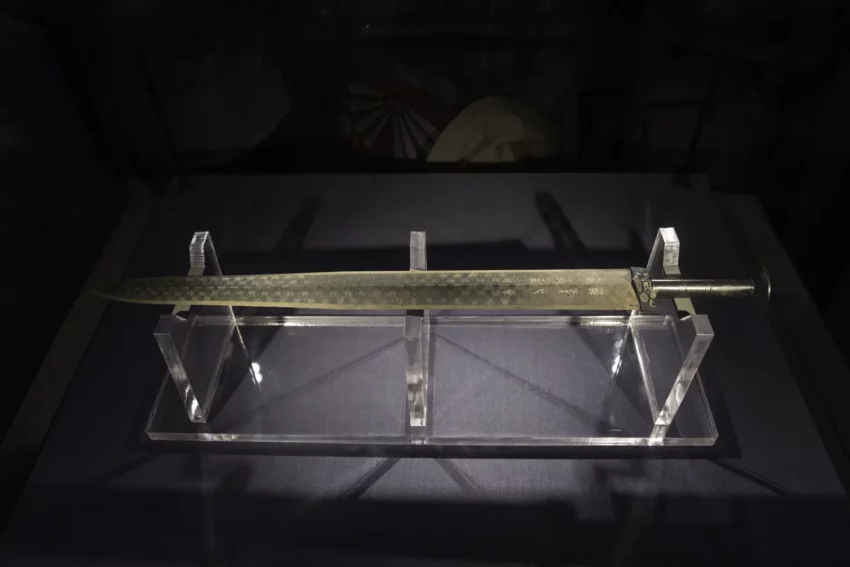The Goujian sword is a historical artifact and one of the oldest swords from ancient China. Named after the King of Yue, Goujian, it is believed to have been created during the Spring and Autumn period (771 to 403 BC). The sword was discovered in 1965 in a tomb in Hubei, China, and is renowned for its remarkable state of preservation, sharpness, and intricate craftsmanship. It is a symbol of ancient Chinese metallurgy and sword-making techniques, as well as a significant cultural artifact in Chinese history.
Get your dose of History via Email
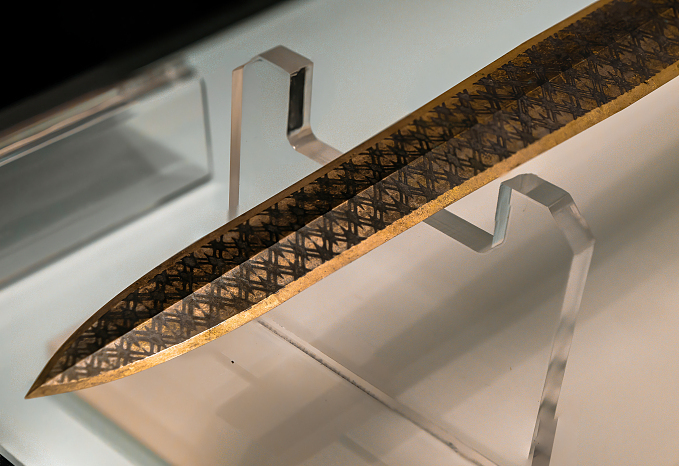
What is the historical significance of the Goujian sword and what does it tell us about the period it was created in?
The Goujian sword is a remarkable testament to the advanced metallurgical and sword-making techniques of ancient China. It is believed to have been created during the Spring and Autumn period, a time of significant cultural and technological advancements in China. The sword’s state of preservation and sharpness, despite being buried for over two millennia, is a testament to the superior craftsmanship and technology of the time.
The sword is also a symbol of the power and authority of King Goujian, who is known for his resilience and strategic prowess. The King’s reign was marked by military successes and diplomatic triumphs, and the sword is a physical representation of his power and influence. The intricate inscriptions and decorations on the sword also provide insights into the cultural and artistic sensibilities of the period.
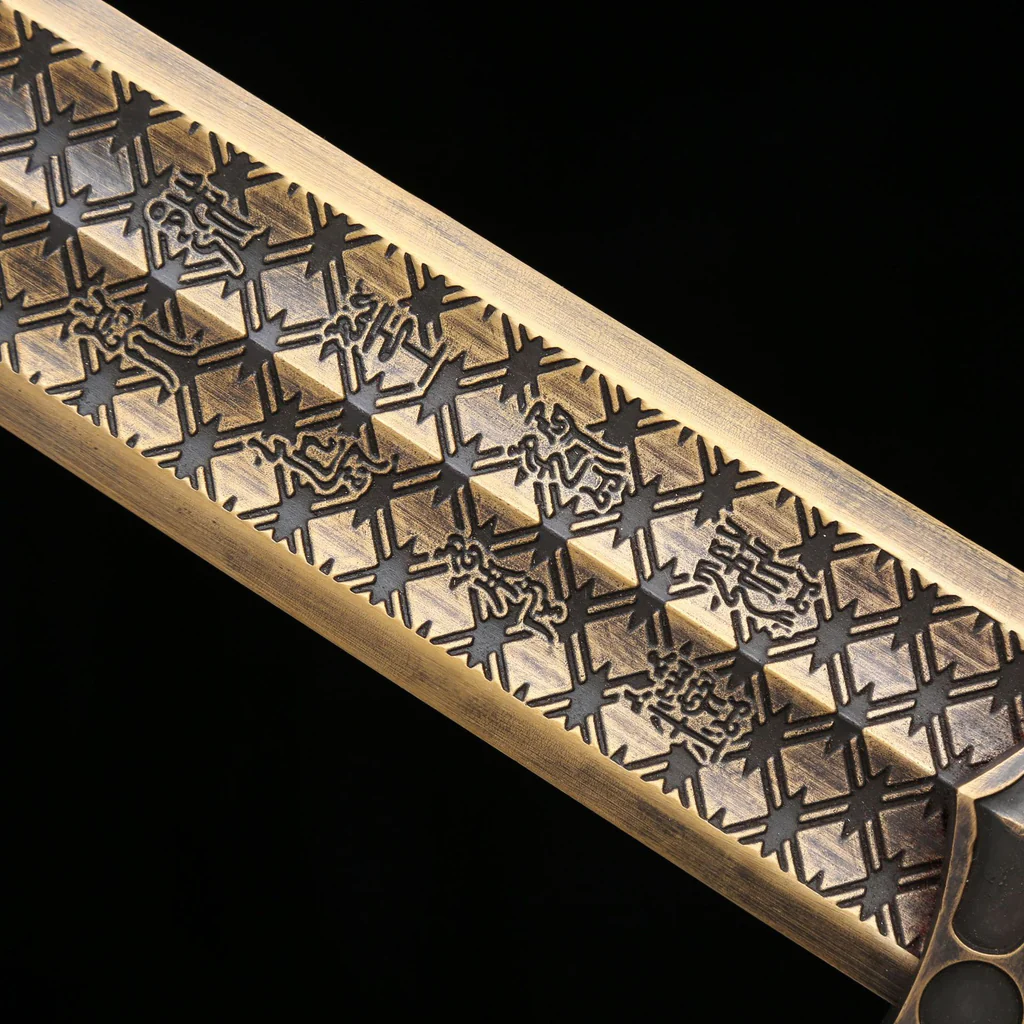
What are the unique characteristics and craftsmanship of the Goujian sword that set it apart from other swords of its time?
The Goujian sword is renowned for its unique characteristics and superior craftsmanship. The sword is made of bronze, with intricate inscriptions and decorations on the blade and hilt. The blade is incredibly sharp, despite being over two thousand years old, and the sword is in an exceptional state of preservation.
One of the unique features of the Goujian sword is the intricate bird motifs on the hilt, which are believed to be symbols of power and authority. The blade also features eight characters, which translate to “King Goujian’s sword”. This inscription not only identifies the owner of the sword but also attests to the literacy and cultural sophistication of the period.
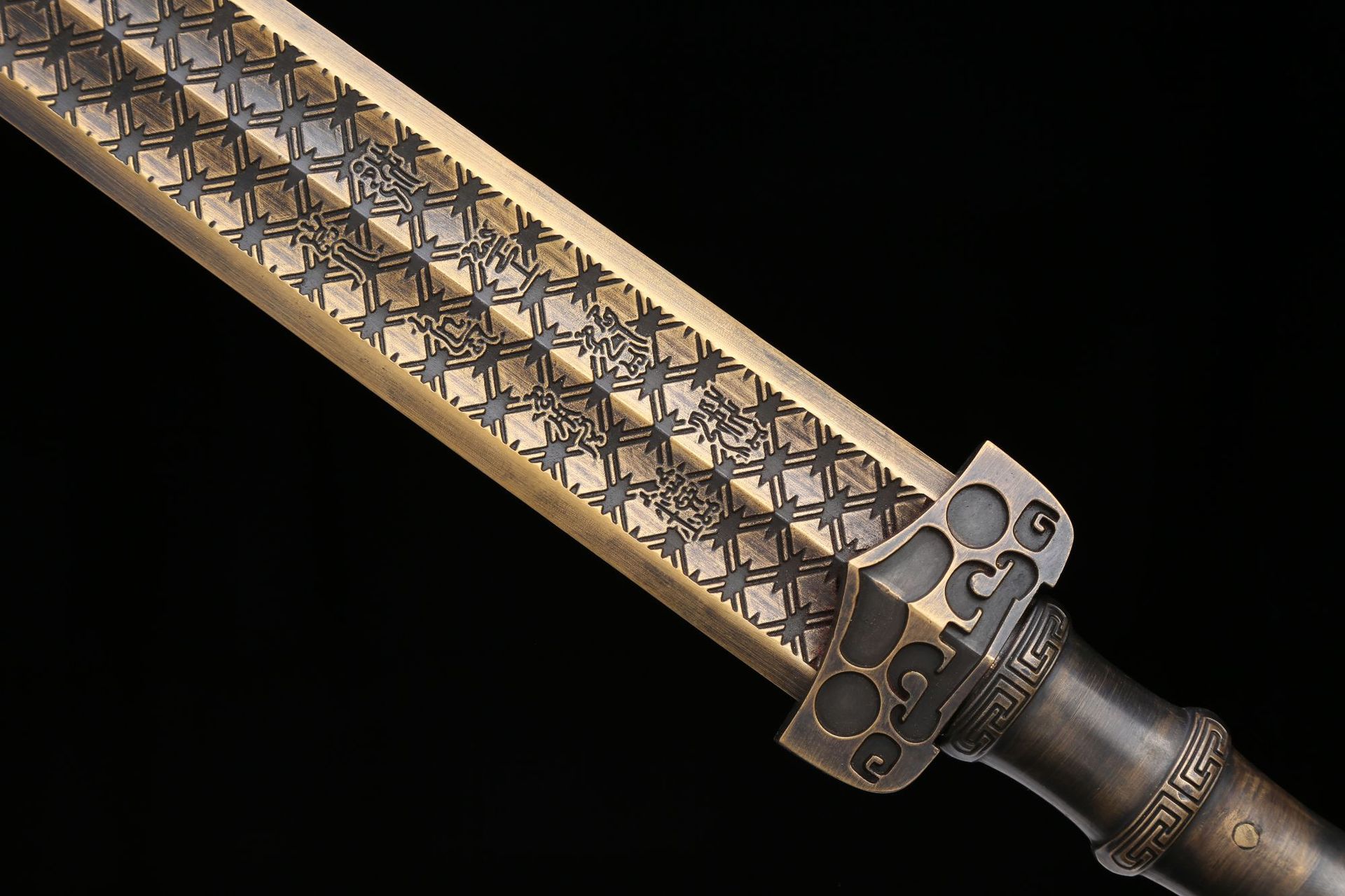
How was the Goujian sword discovered and what were the circumstances surrounding its discovery?
The Goujian sword was discovered in 1965 in a tomb in Hubei, China. The tomb is believed to belong to a nobleman from the Chu state, one of the seven warring states during the Spring and Autumn period. The sword was found in a wooden scabbard, which had rotted away, leaving the sword in a remarkable state of preservation.
The discovery of the sword was a significant archaeological find, as it provided valuable insights into the advanced metallurgical and sword-making techniques of ancient China. The sword’s state of preservation and sharpness, despite being buried for over two millennia, is a testament to the superior craftsmanship and technology of the time.
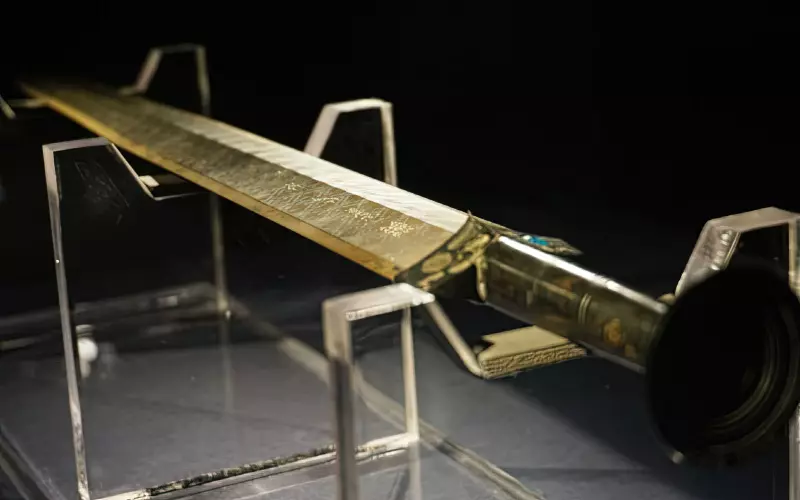
What materials were used in the making of the Goujian sword and what techniques were employed to ensure its longevity and sharpness?
The Goujian sword is made of bronze, a testament to the advanced metallurgical techniques of ancient China. The sword is incredibly sharp, despite being over two thousand years old, and the sword is in an exceptional state of preservation.
The sword’s blade is made of high-quality bronze, with a high tin content that gives it its sharpness and durability. The hilt is also made of bronze, with intricate bird motifs and inscriptions. The sword was likely cast in a single piece, a technique that requires a high level of skill and precision.
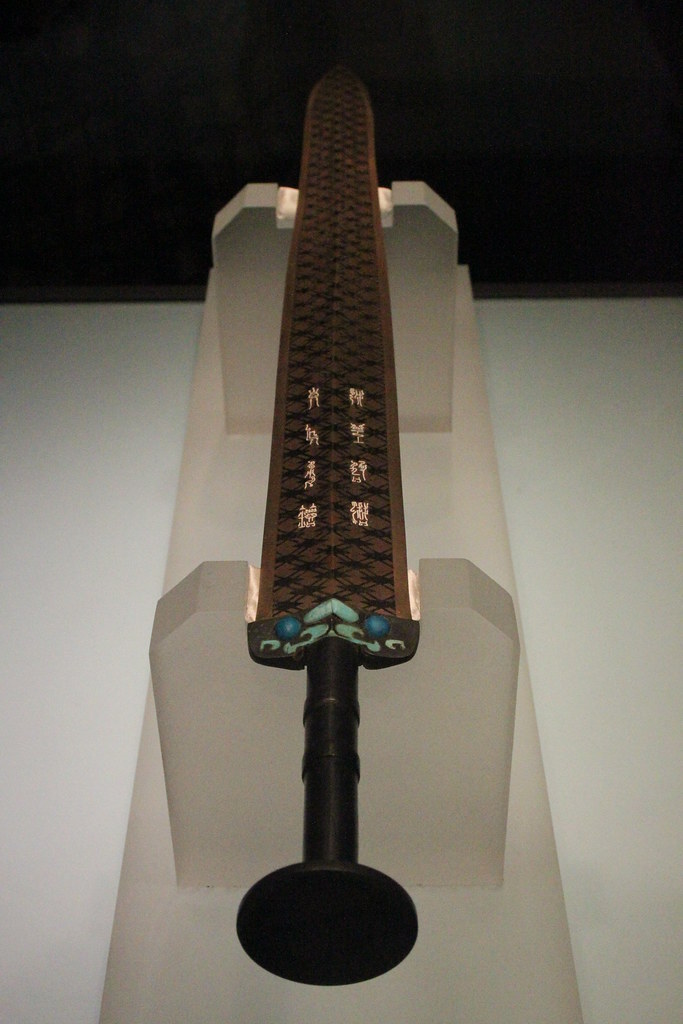
What is the cultural significance of the Goujian sword in Chinese history and mythology?
The Goujian sword holds a significant place in Chinese history and mythology. It is a symbol of the power and authority of King Goujian, who is revered for his resilience and strategic prowess. The sword is also a physical representation of the cultural and technological advancements of the Spring and Autumn period.
The sword is often featured in Chinese literature and art, symbolizing power, authority, and resilience. It is also a popular symbol in Chinese popular culture, appearing in films, television shows, and video games.
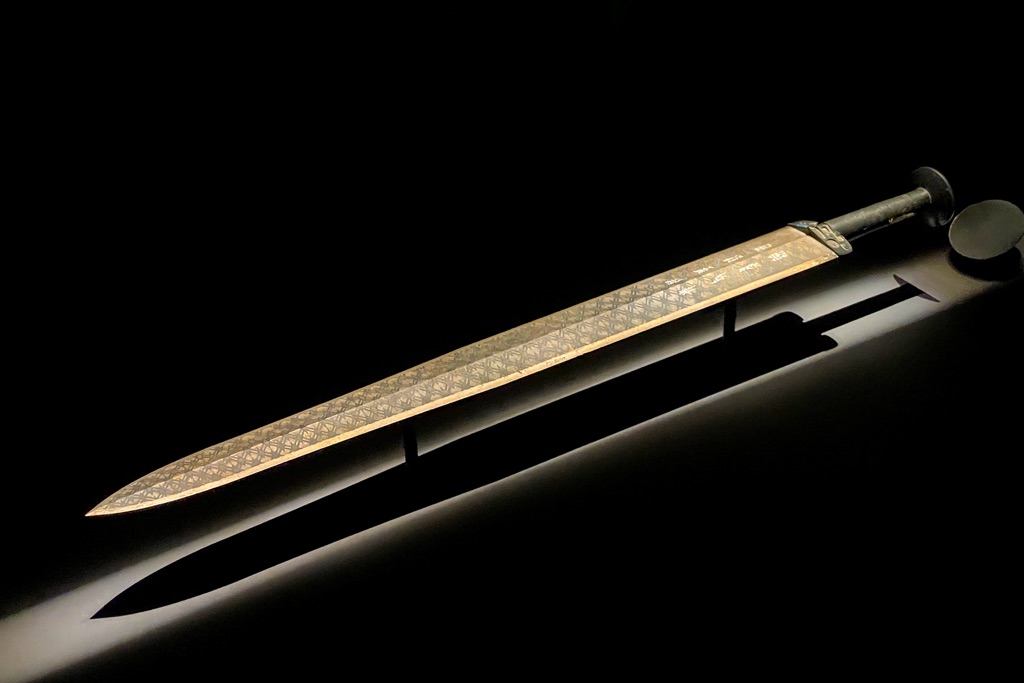
Conclusion and Sources
The Goujian sword is a remarkable testament to the advanced metallurgical and sword-making techniques of ancient China. It is a symbol of the power and authority of King Goujian, and a physical representation of the cultural and technological advancements of the Spring and Autumn period. The sword’s state of preservation, sharpness, and intricate craftsmanship set it apart from other swords of its time, making it a significant cultural artifact in Chinese history.
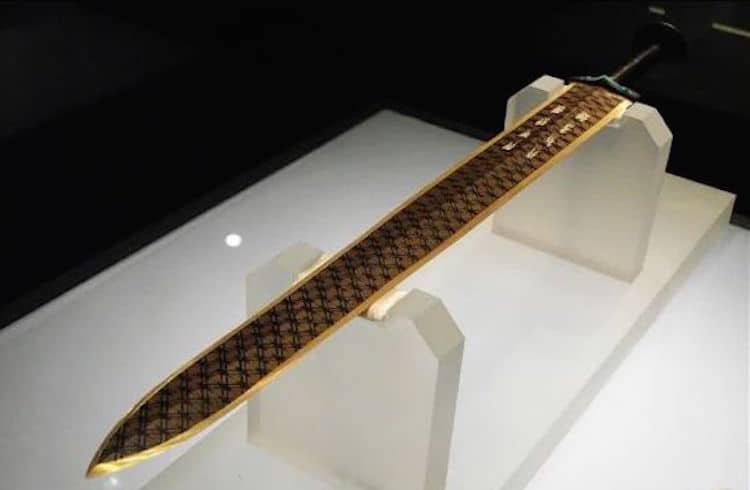
For further reading and to verify the information provided, the following sources are recommended:

